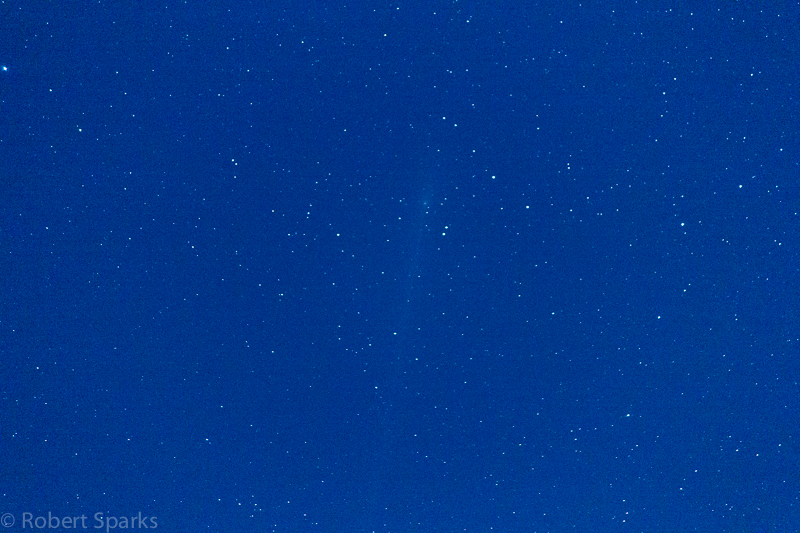Earlier this year, Comet PANSTARRS put on a pleasing show in the western sky after sunset in March becoming a naked eye object for a while. For most people, it has faded from view
However, it is surprisingly still visible. I read a nice article on Universe Today about Comet PANSTARRS having a nice anti-tail. Comets tails usually point away from the Sun but they can form anti-tails which point toward the Sun. Right now, Comet PANSTARRS has an anti-tail that has been reported to be up to six degrees long. Based on its current brightness estimates I thought, hey, I bet I can photograph that.
Another nice feature is that right now Earth is passing through the orbital plane of Comet PANSTARRS. We are now viewing the tail edge on which makes it very thin and brighter than it would otherwise be.
Now I have gotten a new toy recently which I knew would play an important role in this attempt. I wanted to zoom in to get a better view, but when you zoom in your exposure time is limited to a few seconds before you get star trailing (with the 250mm lens I wanted to use, trailing shows up in about 3-4 seconds). This means you need something to let your camera track stars so you can take longer exposures without trailing. Fortunately, I just got an iOptron Sky Tracker. I had practices putting it together during the day, but last night was my frist try under the stars.
When I got to one of my usual places at the Douglas Spring Trailhead at Saguaro National Park East, I was greeted by a news truck that was getting ready to do a live feed for the Fox 11 news at 9 on vandalism of saguaros. They had some lights on I had to dodge but the reporter and techie were nice enough. So I set up my camera, did a crude polar alignement (I am sure I will get better with practice, but I got it good enough for what I was doing last night) and started shooting. I was pleased to quickly find the comet near Polaris and quickly got pics where it was showing up with a nice long anti-tail as advertised.
The nucleus is slightly above and right of the center with the long tail not quite vertical in this image (going from roughly 1 o'clock to 7 o'clock). This is a 30 second exposure on a Canon 60D with a Canon 55-250mm zoom lens at 250mm and f/5.6.
I was just able to see the comet in 8x42 binoculars, although the tail didn't show up that well. If it's clear tonight, I might bring out the big guns (20x80 binoculars) and see what it looks like.
And of course I am happy to see that the Sky Tracker handled my camera fine and was relatively easy to set up and get a reasonable alignment.
Reprinted with permission from the Half-Astrophysicist Blog.






3 comments:
If the reporter was smart, he would have asked you for an interview and put together a story on stumbling upon you in yhe desert and finding you photographing some of the coolest and most remote night sky objects. His loss. Thanks for enlightening us with your talents!
Cccccooooooool, Nice pics of the night cosmos.
Post a Comment